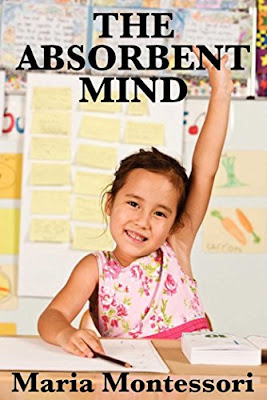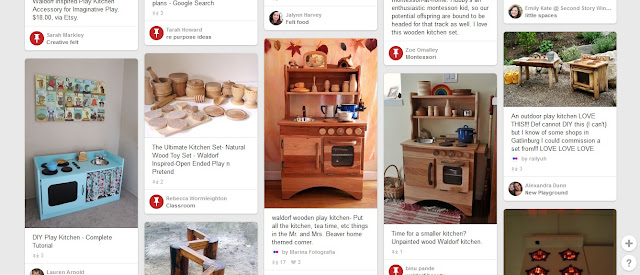Book Review: The Happiest Toddler on the Block
Time for a book review. :) First one of the books I had to read is done.
That's why I wanted to read some books on "discipline", or really - just about this parent-child relationship, what would be the correct way to respond in these cases. Because, slowly the times (easy times), when my job was just to respond to all the needs of my baby, are ending.. And she is starting to have not only needs, but wishes as well. And with wishes there's the problem, that I can't always fulfill them.. Oh, and then it gets fun. :)
And really.. We have a little toddler at home! Super cute little lady, not a baby anymore..
It started a couple of months ago, when I noticed, that she started expressing her opinions more loudly (for example, when wanting something), and at first it came as a bit of a shock. Well, if not a shock, than it was unusual for sure..
That's why I wanted to read some books on "discipline", or really - just about this parent-child relationship, what would be the correct way to respond in these cases. Because, slowly the times (easy times), when my job was just to respond to all the needs of my baby, are ending.. And she is starting to have not only needs, but wishes as well. And with wishes there's the problem, that I can't always fulfill them.. Oh, and then it gets fun. :)
But why this book exactly?
Before Adelaide was born, I read one by the same author - Harvey Karp - The Happiest Baby on the Block:
And that one was really good. The author is a pediatrician, and in the Happiest Baby book he was talking about the " 5 S's" - ways, how to calm a fussy, crying baby - nothing really new maybe, but still. He explained very well about the Forth Trimester - that for the first 3 months after birth baby isn't really ready to be born yet, so what baby really needs, is an environment as similar as possible to the mother's womb, including a lot of closeness and touch. He explained also about colics.
Even though we didn't need to use a lot of technics described in this book, because Adelaide was a little drop from heaven, quite easy and calm baby, it still helped a lot, having read this book. It helped me to enter parenthood, feeling prepared.
I would really suggest to read this one, to everyone, who is expecting. The principles there go really well together with Attachment Parenting as well.
So.. As the first book was so good, had to read the second one as well.
As it says on the cover: How to eliminate tantrums and raise a patient, respectful, and cooperative one- to four-year-old. Who wouldn't want that?
The book can be divided pretty much in two halves. After the introduction, where the author describes toddlers as little cave people, which is a bit of a joke, but true as well (they act sort of uncivilized, and our job is to civilize them..). it helps to look at your toddler and understand them as well - they are just different, still so undeveloped. Also true, that he says that we as parents have to be neither their boss nor buddy, but an ambassador - meaning, we have to connect and communicate with respect, we have to speak their native language, and be kinda of a diplomats, but in the same time - have firm boundaries of what is acceptable and what is not, and put our foot down, when necessary.
I was a big fan of the first part of the book - it talks about ways, how to communicate with your child. The author describes two of his patent methods - the Fast-Food-Rule and Toddler-ese.
The Fast-Food-Rule is a rule of communication that will help to communicate with anyone, who is upset. The rule is - the one who is most upset, always talks first. You listen. And then you repeat, what the upset person has told - to validate their feelings (being respectful of what the upset person is going through), plus you have to repeat with added emotion (not saying it emotionless like a robot), because the upset person will pick up more the way HOW you say it than exactly WHAT you say. And once this is done - the person (toddler, in this case) feels that you listen and have understood him (which is half of the win) - only then you say, what you have to say (offer compromise, explanation, redirect and so on).
This Fast-Food-Rule seems quite genius. People communicate this way automatically, when everyone is happy. But when you have a little upset, screaming toddler (seemingly unreasonable one), people tend to close down, trying to shut them up and getting to do, what you want them to do. So I really think that this is a smart suggestion, and remembering this might help in a critical situation.
And Toddler-ese - it's pretty much the native language of the toddler. Toddlers are not that verbally developed yet, and giving them long and complicated (even though reasonable) explanations can be pointless (especially, when they are already upset). Instead - you're supposed to use a very primitive language - simple words, short phrases, and repeating and once again repeating. Only in that way your little upset toddler will pick up, what you have to say. (Plus again, you have to add emotion to what you're saying.) This makes sense as well.
And actually, exactly the emotion part. Because I have heard, that once your child is upset and throwing a tantrum, you're supposed to stay super calm and almost ignore it. But, according to this book, it's not exactly true (ignoring might help, but later on and used differently) - always and everywhere - first thing is to connect! And communicate. With respect.
First always listen and respond to the child, combining these two principles, adding emotion, so that the child feels like you get it. And then only think, what next. The author swears, that just applying this way of communicating, you can avoid and reduce tantrums 50 to 90 %. :)
So far so good.
The second, longer half of the book talks about ways, how to encourage child's good, reduce annoying and immediately stop unacceptable behavior.
Well, here.. I got a bit disappointed. This part is full of suggestions and examples. Some suggestions were maybe acceptable.. But many, or even most.. Sort of unacceptable to me. Maybe nothing extremely bad, but I would prefer to not use them with my child, I'd prefer to do it differently and manage without them.
For example, he suggests all kinds of rewards and prizes, and lots of praise. Also, he's a big fan of time-outs.
Not all was bad, the point, that you have to give a lot of time-ins (a quality time together and attention, many times through the day) to avoid problematic behavior, is very true.
But the second half wasn't that useful for me. As Mr. Husband said, interestingly, when I cited parts of it - feels like training a dog. And it's true. The next book I'm already on - The Discipline Book by Dr. Sears (review coming next), says exactly this about The behavior modification approach to discipline (one of three possible approaches) - it's strikingly similar to training pets!
Ouch. Yes, well, this is what I would like to avoid - training my child as a pet.
But still, The Happiest Toddler on the Block book was interesting and useful enough, I would suggest to give it a read (it's really easy to read, so doesn't take much time and effort to flip through it, even with a baby clinging on to you).
But the next.. The Discipline Book, well, I'm in the beginning of it now, but I just love it. :) Feels like want to say: Amen! after every sentence. I truly am an Attachment Parenting person. ;)
But that's for the next post.







Comments
Post a Comment